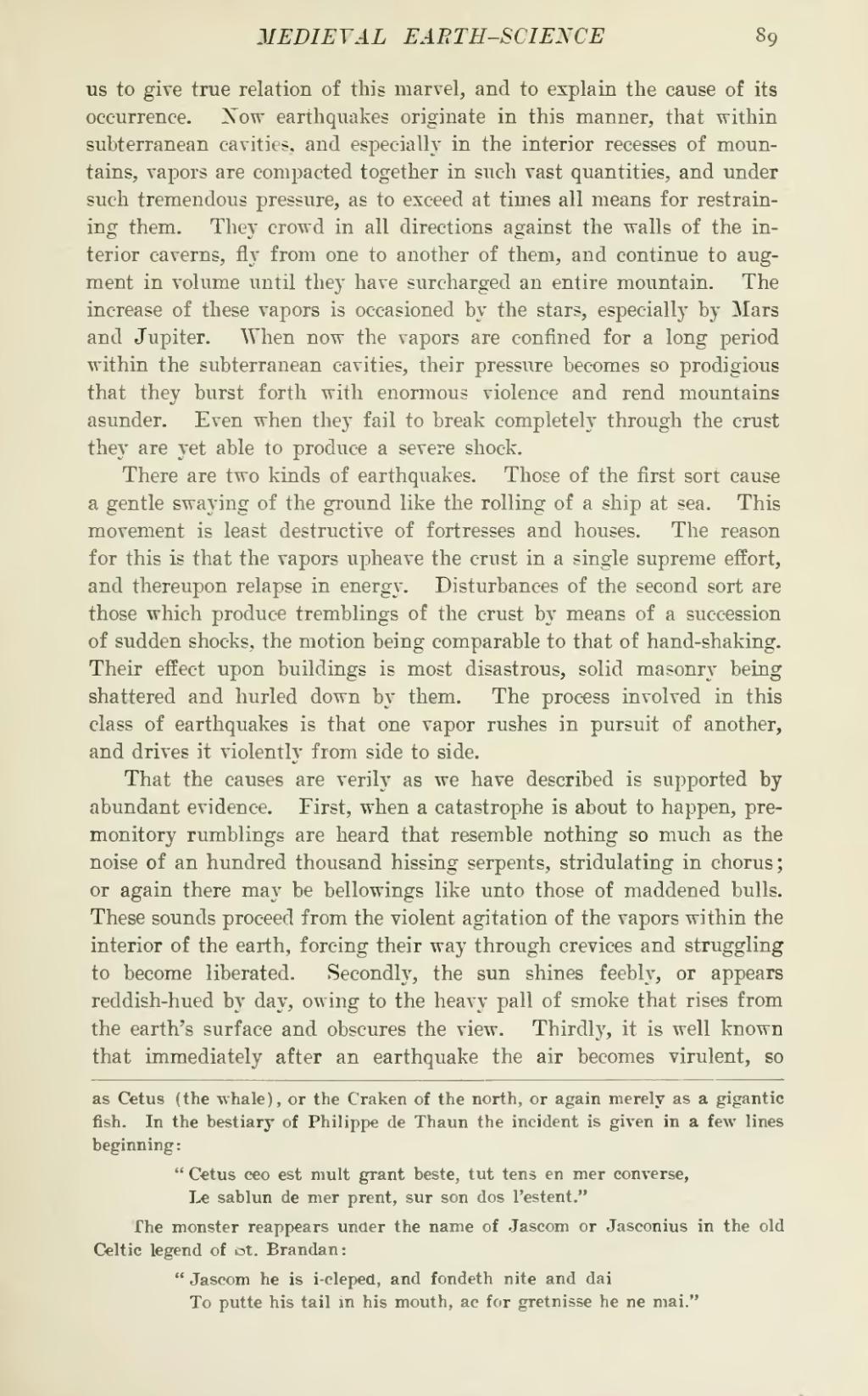us to give true relation of this marvel, and to explain the cause of its occurrence. Now earthquakes originate in this manner, that within subterranean cavities, and especially in the interior recesses of moun- tains, vapors are compacted together in such vast quantities, and under such tremendous pressure, as to exceed at times all means for restrain- ing them. They crowd in all directions against the walls of the in- terior caverns, fly from one to another of them, and continue to aug- ment in volume until they have surcharged an entire mountain. The increase of these vapors is occasioned by the stars, especially by Mars and Jupiter. When now the vapors are confined for a long period within the subterranean cavities, their pressure becomes so prodigious that they burst forth with enormous violence and rend mountains asunder. Even when they fail to break completely through the crust they are yet able to produce a severe shock.
There are two kinds of earthquakes. Those of the first sort cause a gentle swaying of the ground like the rolling of a ship at sea. This movement is least destructive of fortresses and houses. The reason for this is that the vapors upheave the crust in a single supreme effort, and thereupon relapse in energy. Disturbances of the second sort are those which produce tremblings of the crust by means of a succession of sudden shocks, the motion being comparable to that of hand-shaking. Their effect upon buildings is most disastrous, solid masonry being shattered and hurled down by them. The process involved in this class of earthquakes is that one vapor rushes in pursuit of another, and drives it violently from side to side.
That the causes are verily as we have described is supported by abundant evidence. First, when a catastrophe is about to happen, pre- monitory rumblings are heard that resemble nothing so much as the noise of an hundred thousand hissing serpents, stridulating in chorus; or again there may be bellowings like unto those of maddened bulls. These sounds proceed from the violent agitation of the vapors within the interior of the earth, forcing their way through crevices and struggling to become liberated. Secondly, the sun shines feebly, or appears reddish-hued by day, owing to the heavy pall of smoke that rises from the earth's surface and obscures the view. Thirdly, it is well known that immediately after an earthquake the air becomes virulent, so
as Cetus (the whale), or the Craken of the north, or again merely as a gigantic fish. In the bestiary of Philippe de Thaun the incident is given in a few lines beginning:
The monster reappears under the name of Jascom or Jasconius in the old Celtic legend of St. Brandan:

